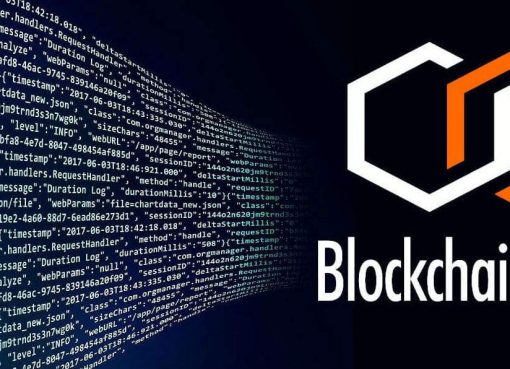Blockchain platform Cardano — whose cryptocurrency ADA surged past Binance Coin, Polkadot and Tether over the weekend to become the third largest in crypto markets — announced today the successful completion of a milestone upgrade and its transition to a multi-asset blockchain.
The much-anticipated “Mary” hard fork protocol update — named after Mary Shelley, the author of “Frankenstein” — will enable users to create new tokens and carry out multi-asset transactions directly on the Cardano blockchain, like its native ADA token. The upgrade will now position Cardano more competitively against Ethereum, which has been plagued by congestion and high fees.
Cardano — a decentralized proof-of-stake public blockchain and cryptocurrency project — has been dubbed one of the so-called “Ethereum killers.” Its ADA token is now ranked third by market cap after bitcoin and Ethereum’s ether. Though ADA’s market cap of close to US$40 billion is still some way away from ETH’s US$178 billion, ADA prices have risen more than 500% since the start of the year. ADA started 2021 at US$0.18 and is currently trading at US$1.23 as of publication time.
MISSION ACCOMPLISHED!: We can confirm that the #Cardano ‘Mary’ protocol update was successfully applied to the #Cardano mainnet tonight at 21:44:51 UTC via a managed hard fork combinator event.
Welcome to the beginning of an exciting new multi-asset era on #Cardano $ADA 1/4 pic.twitter.com/vk3qDrIIds
— Input Output (@InputOutputHK) March 1, 2021
See related article: IOHK’s Charles Hoskinson says proof of stake is much better than proof of work
The upgrade sets the foundation for more use cases on the Cardano blockchain such as decentralized finance (DeFi), stablecoins and non-fungible tokens (NFTs). NFTs — digital assets whose authenticity and true ownership are tracked on a blockchain — have exploded in popularity recently in the art, gaming, sports, music and collectibles sectors.
“Native Tokens are a crucial step in the rollout of smart contracts on Cardano, allowing businesses and developers to benefit from the increased security, flexibility and lower costs that a multi-asset enabled Cardano offers,” said Aparna Jue, product director for Input Output HK (IOHK) — the company behind the Cardano project — in an email to Forkast.News. “Over the next few months, we expect to see a range of promising use cases for the utility of Cardano come to life.”
A token builder or graphical user interface is in the works to help users with token creation, making the blockchain more accessible to a wider audience. “The command line interface (CLI) requires a certain level of development prowess. We have devised other ways for less technically proficient users to create tokens. To achieve this, we plan to launch a token builder after the mainnet CLI launch,” said Tim Harrison, marketing and communications director at IOHK, in a blog post.
See related article: NFT mania: Are blockchain art and NBA crypto collectibles a fad or the future?
Cardano’s main rival, Ethereum launched its Ethereum 2.0 Beacon Chain last December as part of a multi-year upgrade to make the blockchain more scalable and sustainable.
But unlike ERC-20 tokens on the Ethereum blockchain, native tokens on Cardano do not need smart contracts to be built to handle token creation or transactions. “Because native tokens do not require smart contracts to transfer their value, users will be able to send, receive, and burn their tokens without paying the transaction fees required for a smart contract or adding event-handling logic to track transactions,” according to the blog post.
“It’s not just native tokens this week, along with rapid expansion of Cardano’s funding mechanism, Project Catalyst, Cardano is now 88% decentralized, bringing us one step closer to not only having the world’s most advanced blockchain, but one whose future development is decided by its community,” said Jue.
See related article: 74% of stablecoins are issued on Ethereum, according to new report
The Mary hard fork is Cardano’s third and follows earlier Shelley and Allegra hard fork events. A hard fork — a significant change that reorganizes a blockchain — usually results in the previous version becoming incompatible with the hard-forked version of the blockchain.
“We went from a BFT [Byzantine fault tolerance] mode to a proof-of-stake system, like when we went from Byron to Shelley [phases of Cardano’s development]. These are very big and often traumatic events,” IOHK and Cardano founder Charles Hoskinson told Forkast.News in a recent interview.
“So we recognize that with Cardano, we built a very special key management system called the ‘Hard Fork Combinator.’ What this basically does — is it makes it very easy for us to do a hard fork without a shadow network,” Hoskinson added. “Since we instituted it back in July of last year, we’ve already done one hard fork. We did the Allegra hard fork in December. Nobody even noticed. It was a very graceful upgrade.”
In a video posted on Twitter today, Hoskinson called the successful Mary hard fork “nothing short of a technological marvel.”
“Once the code is successfully deployed to mainnet, we’ll release a new Daedalus Flight version for user testing, which will be our first Cardano wallet with integrated multi-asset capability. Once we are happy with wallet performance and usability, we’ll deliver the Daedalus mainnet release bringing the full-fat native token experience to every Cardano user,” Harrison said.
See related article: Cardano’s Hoskinson wants to win over Fortune 500 companies
The Mary hard fork is part of Cardano’s “Goguen” smart contracts phase of development, which follows earlier Bryon (foundation) and Shelley (decentralization) phases. The five-era roadmap also includes Basho (scaling) and Voltaire (governance).
According to Hoskinson, users can expect “a fully decentralized network and block production, and a full smart contract engine by likely the end of quarter two of this year.”
In addition to building Cardano’s infrastructure, Hoskinson is also looking to work with Fortune 500 companies and developing economies such as Africa as part of Cardano’s growth strategy. “A Fortune 500 company needs new tools to be able to get into that market and work with those consumers,” he told Forkast.News.
“We can facilitate that because we’ve been in those jurisdictions, especially Ethiopia, for example, for over three years,” Hoskinson said. “We know the politics, we know the regulations, we already have the government relationships and we know a lot of local businesses. And so you can use blockchain as a great binder.”
“If we can keep this momentum and extend it, we’re really going to give Ethereum and the rest of these guys a run for their money,” said Hoskinson, who co-founded Ethereum prior to IOHK.




